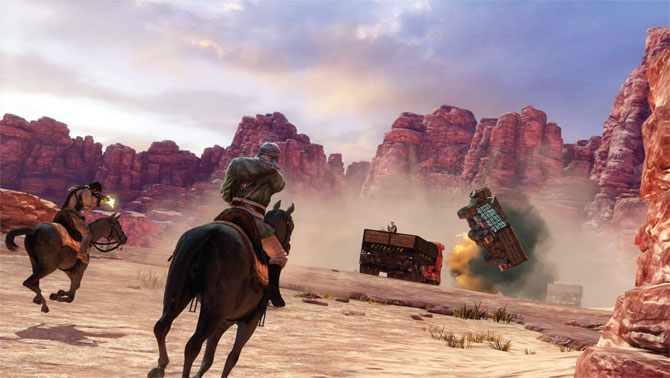

Publisher: Sony Computer Entertainment For those unaware, Uncharted is Sony’s flagship PS3 franchise, a series of games about treasure hunter Nathan Drake, which are as close to watching Hollywood blockbusters as video games can be. The first, Drake’s Fortune, was lauded by everyone at its launch as the best game on the PS3 (except me; I hated it—more on that below). Then the second, Among Thieves, was praised even more highly and often cited as having the best opening sequence of any video game in history (I loved the second one and found that it provided everything people had led me to expect from the first). Like the first two, Drake’s Deception is a platforming third-person cover shooter with puzzles, about the most generic (alternately: Platonic) expression of modern AAA game design sensibilities you can find. Where it shines is on execution. The writing and voice performances are excellent, with care taken to make the characters charismatic and emotive, above and beyond the standards for video games. Graphic design is also excellent, with beautifully rendered environments enhanced by a great choice of color palettes, geared toward making relevant ledges and handholds stand out without looking like obviously miscolored game elements bolted onto otherwise self-consistent architecture (as is the standard for post-Sands of Time platformers, unfortunately). Here’s my problem with the game: The gunfights are too freakin’ long. The first Uncharted game did this thing where you’d fight a wave of enemies and then another from a different direction and then a third wave of enemies from the first direction again, and every time left me thinking, “Oh, come on, I just did that fight!” The second game omitted this sort of excess; the fights were short, and often half the enemies on the field could be eliminated through stealth first. I thought that was perfect. Third game? The fights are as long as the ones in the first game again! I mean, I don’t know whether it’s a budget or a time thing or what—the second and third games are about the same length, but the second one feels more substantial, with more time spent exploring large, varied, detailed environments. Drake’s Deception’s environments are just as detailed, but it feels like there are fewer of them and you spend longer in each, shooting more guys. The problem is exacerbated by the game’s shooting mechanics, which are… I don’t want to say poor, but less precise than I’m used to. I know Halo-calibrated aiming makes for an unrealistic number of headshots that may not be appropriate for an everyman like Nate Drake, but with gunfights already too long, aim controls that make enemies more realistically difficult to target do not enhance the experience. By all means play Drake’s Deception; it is an excellent game. But don’t go into it expecting another work of luscious artistic excess like its immediate predecessor. This review is based on a copy of Uncharted 3: Drake’s Deception provided by Sony for promotional purposes.